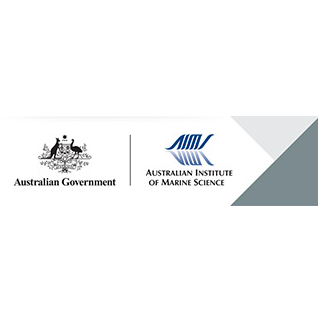Brief description
In 1980, thirty permanent photographic sites were established on 6 reefs in 2 separate regions of the Great Barrier Reef. In 2001 an additional reef location was examined. Since 1980 the sites have been photographed annually to document fine-scale changes to the reef environment in a variety of habitats over an extended period of time. The last survey undertaken was in June-July 2007.The sites have been impacted by a number of disturbances including crown-of-thorns starfish, bleaching and cyclones. Analysis of the images reveals information about the extent and long term effect of each disturbance. Other aspects of the coral reef such as community type, diversity, succession, spatial interaction, species growth rate and resilience can be explored. To document fine-scale changes to the reef environment in a variety of habitats over an extended period of time. In the northern Great Barrier Reef region, 5 sites were established on the fringing reef of Lizard Island at depths between 2m and 13m and 8 sites were established on Yonge Reef at depths ranging from 2m to 38m.In the central Great Barrier Reef region a total of 17 sites were established on Pandora, John Brewer, Rib and Myrmidon Reefs.2 additional sites were established at Nellie Bay, Magnetic Island in December 2001 to document bleaching.The sites were photographed using 2 cameras to produce a stereo or 3-D image. Utilising 3-D software it is possible to make accurate measurements of individual corals, create spatial maps and track the fate of selected corals through time.Lineage
Maintenance and Update Frequency: asNeededNotes
CreditDone, Terence J (Terry), Dr (Principal Investigator)
Wakeford, Mary, Ms (Custodian)
Modified: 17 10 2024
text: westlimit=145.45; southlimit=-19.2; eastlimit=147.4; northlimit=-14.55
Photogrammetry in coral ecology: a technique for the study of change in coral communities: Done TJ (1982) Photogrammetry in coral ecology: a technique for the study of change in coral communities. 2: 315-320. In: Proceedings of the 4th International Coral Reef Symposium, Manila, 1981. Marine Sciences Center, University of the Philippines.
local : articleId=3124
Effects of two Acanthaster outbreaks on coral community structure - the meaning of devastation: Done TJ (1985) Effects of two Acanthaster outbreaks on coral community structure - the meaning of devastation. 5: 315-320. In: Proceedings of the 5th International Coral Reef Congress, Tahiti, 27 May-1 June 1985. Antenne Museum-Ephe.
local : articleId=3127
Close range photogrammetry for time series studies of reef coral communities : a report to the Great Barrier Reef Marine Park Authority. Part 2: Done TJ (1980) Close range photogrammetry for time series studies of reef coral communities : a report to the Great Barrier Reef Marine Park Authority. Part 2. Australian Institute of Marine Science.
local : articleId=2106
Reconnaissance of reef benthos as an aid to management : a report to the Great Barrier Reef Marine Park Authority. Part 1: Done TJ (1980) Reconnaissance of reef benthos as an aid to management : a report to the Great Barrier Reef Marine Park Authority. Part 1. Australian Institute of Marine Science. 1 p.
local : articleId=2105
Time Series Photography of Great Barrier Reef Corals
uri :
http://www.aims.gov.au/pages/research/gbr-tsp/index.html![]()
Decadal trends in a coral community and evidence of changed disturbance regime: Wakeford M, Done TJ and Johnson C (2008) Decadal trends in a coral community and evidence of changed disturbance regime. Coral Reefs 27: 1-13.
local : articleId=7596
Decadal changes in turbid-water coral communities at Pandora Reef: loss of resilience or too soon to tell?: Done TJ, Wakeford M, DeVantier LM, McDonald A, Turak EI and Fisk DA (2007) Decadal changes in turbid-water coral communities at Pandora Reef: loss of resilience or too soon to tell?. Coral Reefs 26: 789-805.
local : articleId=7528
Taxonomic and bathymetric patterns of bleaching in corals, Myrmidon reef: Fisk DA and Done TJ (1985) Taxonomic and bathymetric patterns of bleaching in corals, Myrmidon Reef. 6: 149-154. In: Proceedings of the 5th International Coral Reef Congress, Tahiti, 27 May-1 June 1985. Antenne Museum-Ephe.
local : articleId=3128
- global : 0268abc0-d836-11dc-b424-00008a07204e


